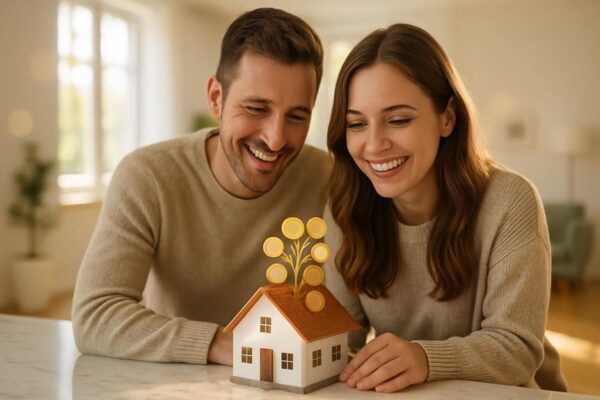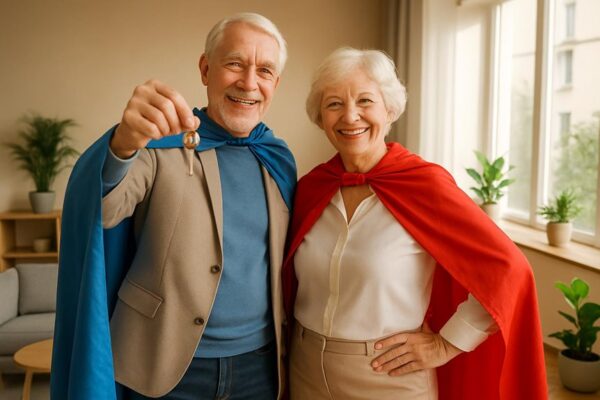Living in a place where you can walk around makes your home worth more money. You can save money too since you won't need to drive as much. Walking each day helps you stay healthy and happy. When you walk, you get to meet and talk with people who live near you. Safe streets with good sidewalks make it easier for everyone to get around. Walking instead of driving helps keep our air clean. When you pick a home in an area that's good for walking, you make a smart choice that helps you, your wallet, and the planet.
Ready to start building equity in your own Michigan home? Get your personalized home loan quote today.
Health Benefits of Walkable Neighborhoods

Walking in your neighborhood is good for your body and mind. When streets have sidewalks and safe paths, you'll want to walk more. You can walk to stores, parks, and other places instead of driving. This helps you stay at a good weight and keeps your heart healthy. It makes your legs and bones strong too.
Walking also helps you feel happy. You can meet your neighbors and talk to store owners while walking around. People who live in areas where they can walk a lot feel less sad and worried. This is because they move their bodies more and spend time with others.
Walking also gives you time to think and relax in a way that driving does not.
Michigan residents, unlock the door to your new home. Request your home loan quote from Treeside Financial today.
Property Values and Walkability Scores
Want to keep your home's value strong? Look at how easy it's to walk to places nearby.
People love homes where they can walk to stores, parks, and trains. They often pay much more for these homes – up to 15% more than homes where you must drive everywhere.
When you can walk to fun spots, more people will want to buy your home later. This helps your home stay worth more money over time.
Higher Resale Price Potential
Walking to places helps your home sell for more money later. Homes that let you walk to stores and cafes sell for up to 30% more than homes where you must drive everywhere.
More people want to live where they can walk to fun places. Young workers and older folks love spots where they can walk to coffee shops and parks. This means more people will want to buy your home in the future.
When you can walk to stores, buses, and places to eat, your home will keep its value. As more people want to live in these spots, your home becomes worth even more money.
Walkability Boosts Home Value
Living in a walkable area makes your home worth more money. When you can walk to stores, parks, and places you visit every day, more people want to buy homes there.
People love being able to walk to get what they need. They don't want to drive everywhere. This makes homes in these areas cost more.
Your home can be worth more when:
- It gets a better walk score
- You can walk to stores in 5 minutes
- You can walk to fun places nearby
When an area has good places to walk, new shops and stores move in too. This makes the whole area nicer and helps your home cost even more.
You might be closer to buying your home than you think
Take our 2-minute home buyer readiness quiz to see how prepared you really are – no credit check required.

The closer you're to places you can walk to, the more your home is worth. Smart buyers look for homes where they can walk to get coffee, food, or meet friends.
Environmental Impact of Walking

Walking helps keep our planet healthy. When we walk instead of drive cars, we make less pollution and help keep the air clean in our streets.
| Environmental Factor | Impact of Walking |
|---|---|
| Carbon Emissions | Eliminates vehicle CO2 output |
| Air Quality | Reduces local pollutants |
| Noise Pollution | Decreases urban sound levels |
| Infrastructure Wear | Minimizes road degradation |
| Green Space Usage | Promotes park preservation |
Cities where people walk a lot have more trees and gardens. They need fewer parking lots and roads. This means the city stays cooler and rain water can soak into the ground better. When you live in a place made for walking, you help make your town better for nature and all the people who live there.
Community Connection and Social Life
A friendly neighborhood lets you meet new people every day.
Kids play in parks while parents chat nearby. You can walk to fun events at the local plaza.
When you go to shops on foot, you get to say hi to your neighbors. These small chats help you make friends. Soon, the whole area feels like one big family.
People care for each other and join in local fun. It's much nicer than places where everyone just drives past in cars.
Neighborhood Events and Gatherings
Our neighborhoods come alive when we can walk around easily. People love to meet up and have fun together on streets where they feel safe walking.
Streets made for walking help us get together more. When we close these streets, we can have big parties and fun festivals. Everyone can join in!
Our local farmers set up markets where we can walk from stand to stand. We buy fresh food and talk with friends along the way.
When we clean up our streets, we work side by side. We fix up gardens and pick up trash together. This makes us feel proud of where we live.
Walking paths connect us all. They help us meet new friends and make our daily life better. The more we walk, the more friends we make.
Spontaneous Social Interactions
People in walkable neighborhoods often meet each other by chance. You might talk to someone while walking your dog. You could wave hello when getting your mail. You might chat with others at the coffee shop. These small chats help you know and trust your neighbors better.
Places like sidewalks and front porches make it easy to talk. You see familiar faces each day. You pass parents taking kids to school. You meet older folks on their daily walks. You say hi to runners on their usual path.
All these little chats help make your neighborhood feel like home. They create ties that make you feel part of your community.
Safety in Pedestrian-Friendly Areas

Walking in neighborhoods with people-friendly streets helps everyone stay safe. Good walking areas have many things working together to protect us.
Streets have speed bumps and wide sidewalks that make cars slow down. This keeps us safer when we walk. Bright lights shine on paths at night, and help phones are close by if we need them. We can see clearly all around us.
Shops with big windows and places to eat outside help too. Store owners and people eating can watch what happens on the street. More eyes on the street means less trouble.
When more people walk in a neighborhood, it gets even safer. People feel good about walking, so they do it more often. This makes the streets safer for everyone.
Cost Savings Without Car Dependence
You can save lots of money by living where you can walk places. When you don't need a car to get food or go to stores, you keep more money in your pocket. You won't have to pay for gas, car fixes, or parking spots. Your family might only need one car, or maybe no car at all!
Many people who live in these areas walk to get groceries and visit shops. They save hundreds of dollars each month.
You can also take buses or trains to go far away, which costs less than driving. Walking is good for your body too, so you spend less on doctor visits.
All the money you save can help pay for your house or go into your savings.








